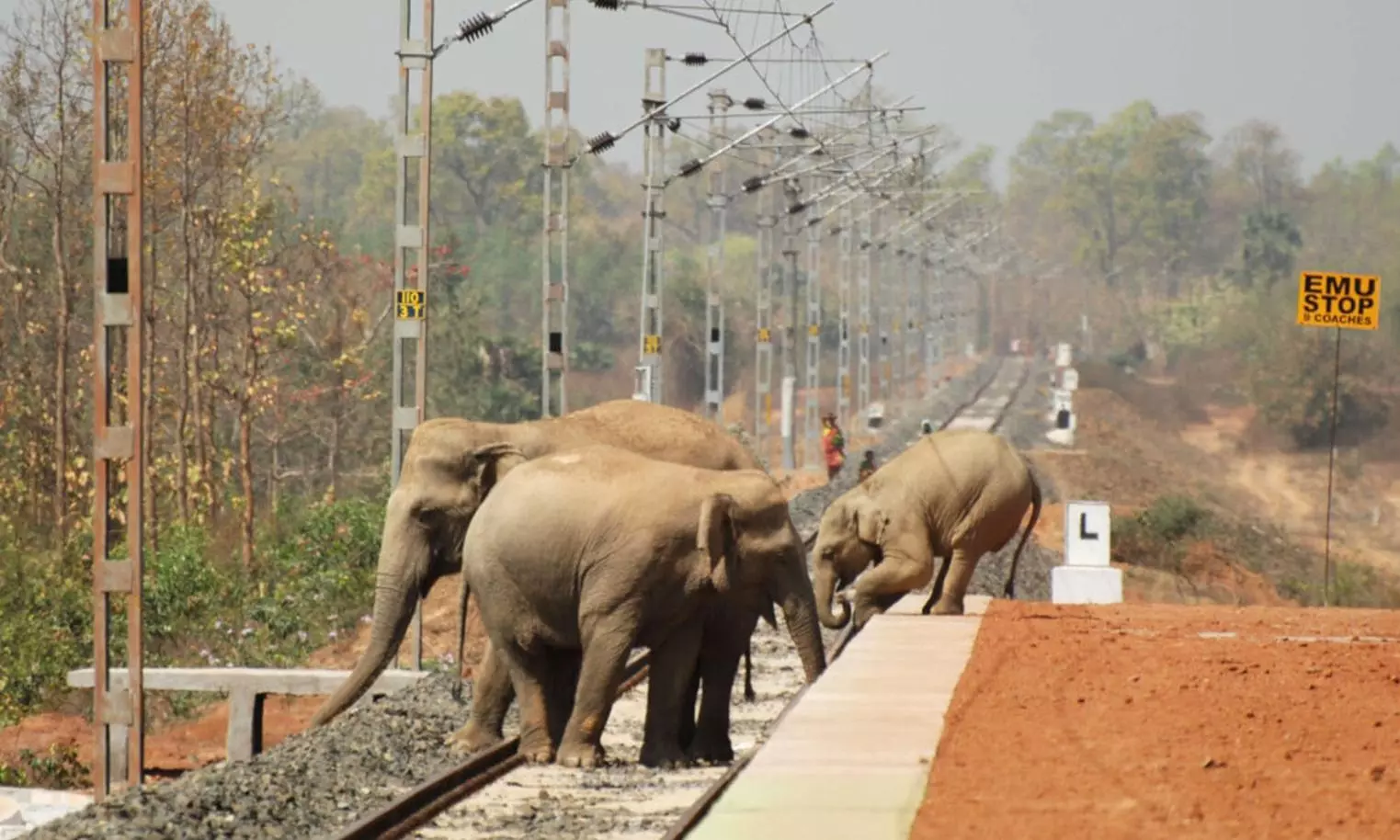
Elephants die on 'killer tracks' as Railways drag feet to install 'Gajraj'
Three elephants have died in Bengal due to communication gaps, and sluggish implementation of AI-based intrusion detection system despite its proven success

After the Kavach fiasco, the Indian Railways appears to be caught napping in implementing another track security device called “Gajraj”, an AI-based Intrusion Detection System (IDS) introduced in 2022 to prevent trains from colliding with elephants.
Three elephants, including two calves, died after being hit by a speeding train in Jhargram district of West Bengal on Friday (June 18), raising serious questions over costly security lapses.
The preliminary investigations clearly pointed towards a communication gap between the railways and the state forest department that led to the accident.
Sluggish implementation
Many in the forest department as well as in the railways pointed out that the IDS system has been developed precisely for avoiding miscommunication and expressed dismay over not availing the available technology to avert the accident.
It is learnt from the railway sources that a proposal to install Gajraj in the South EasternRailway (SER) zone is pending since 2023.
Also read: West Bengal: Public outcry over video of wild female elephant set ablaze by villagers
The implementation of the IDS system in the Northeast Frontier Railway, in December 2022, successfully minimised elephant deaths on the railways track in the North Bengal areas. A senior railway official admitted on the condition of anonymity that bringing more vulnerable areas under the IDS coverage has been sluggish.
Warnings about elephants
The AI-based surveillance system is embedded to the optical fibre cable (OFC) laid beneath the tracks for signalling and communications. The vibration caused to the OFC due to the movement of elephants is detected by the device. It then sends real-time alerts to the loco pilots and other stakeholders.
The route where the advanced technology is not available, the forest officials of the area alert railway officials about the movement of any elephant herd through mail, WhatsApp groups or telephonically. Generally, the alert is sent to the concerned railway station manager and divisional traffic inspector. They in turn pass on the message to the loco pilot of the oncoming train.
The accident
On that ill-fated day (July 18), the forest officials alerted the railways about the movement of elephants near the track through a message posted on the common WhatsApp group at around 10.56 pm. No railway official presumably checked the message at that “hour of the night”. Unaware of the presence of elephants, the driver of the JanShatabdi Express did not slow down the train, resulting in the accident.
The state forest department has lodged an FIR against the driver, the station manager of Sardiha and the divisional traffic inspector of the Kharagpur Division for negligence. All these could have been avoided if the IDS device was timely installed. The proposal for the installation of the device is in the final stage of clearance, claimed a senior official at the Kharagpur Division.
Also read: Ground Report from Thadagam: A thriving scam and rising human-elephant conflicts
The state forest department once again reminded the railways about the need to immediately install the device in vulnerable segments of the SER zone. "We have told the railways to start installing the device along the tracks in south Bengal areas," said chief conservator of forests Sandeep Sundriyal.
Slow progress
West Bengal has 26 identified elephant corridors, which happens to be the highest in the country. 15 of these corridors are located in North Bengal and the remaining 11 are in South Bengal.
The Wildlife Institute of India had earmarked around 100 vulnerable spots for the railways along the railway track in Jangalmahalarea, in which Jhargram is located, for the installation of the Gajraj system almost a year ago.
The technology was successfully implemented in the 141-kilometer stretch of the NFR’s Alipurduar Division in West Bengal and six in the Lumding division in Assam, in September 2022. As per the Railway’s own assessment, the official said, the system detects the presence of elephants on tracks with 99.5 per cent accuracy.
Little achieved
In December 2023 it was decided that the system would be installed in a 700-km stretch across zones. Subsequently, a total length of 1,158 km was sanctioned for IDS implementation. But, till date, very little has been achieved.
As per the last available data, the installation process was in progress at 349 km in the East Coast Railway zone; 55.85 km in Southern Railway zone and 36 km in North Eastern Railway zone.
Similarly, slow progress is seen in rolling out the anti-collision device Kavach 4.0. The deadline for the installation of the system on the 3,000 km route of New Delhi-Mumbai and New Delhi-Kolkata has been pushed back to December 2025 from March this year.

